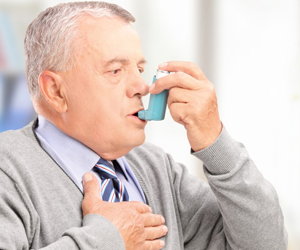- Autism-adapted safety plans (AASP) were found beneficial by nearly two-thirds of autistic adults in a recent study
- Customized safety plans help autistic individuals by providing clear, accessible steps to ensure their safety
- The study highlights the need for tailored mental health interventions for autistic adults to reduce suicide risk
A new suicide prevention intervention designed specifically for autistic adults has been tested as part of a research initiative to find strategies to reduce suicide and self-harm among autistic persons.
The trial was conducted by scientists from the University of Nottingham’s School of Psychology and Newcastle University, who evaluated autism-adapted safety strategies with a group of autistic persons and discovered that nearly two-thirds found them beneficial. The National Institute of Health Research (NIHR) financed the study, and the findings were published in the Lancet journal eClinicalMedicine.
Advertisement
Does Autism Increase the Risk of Suicide?
Dr. Sarah Cassidy of the University of Nottingham and Professor Jacqui Rodgers of Newcastle University led the study. Previous research has shown that autistic people are more likely to self-harm and commit suicide than non-autistic people, but there is a lack of research into what could help reduce this risk.
Dr. Cassidy said, “We have consulted with autistic people and those who support them worldwide, to identify the most important areas of suicide prevention research to focus on and one of the top priorities was to develop new personalised suicide prevention interventions with and for autistic people. One of the suggested interventions to focus on was safety plans, as many autistic people reported using these, but recommended that adaptations were needed to make these clearer and easier to use.”
Advertisement
Suicide Prevention Strategies for Autistic People
Safety plans are customized step-by-step plans that anyone can create to help keep themselves safe. Safety plans often include a person’s reason for living, activities and people to distract from thoughts of self-harm, friends, family, and professionals to contact for support, emergency contacts in the event of a crisis, and a plan for making the surroundings safe. Safety plans have been shown to minimize self-harm, suicide ideation, and suicidal behaviours in a variety of populations, but never in autistic persons.
In this new study, 49 volunteers examined a safety strategy designed exclusively for autistic people. The autism-adapted safety plans (AASP) use cleaner language that is more accessible to autistic persons. AASP now includes additional sections for autistic people to help support workers understand how to best interact with and support them during a crisis. A resource pack was also created providing guidelines to assist autistic people and their supporters in effectively completing an AASP together.
Advertisement
Autism-Adapted Safety Plans for Suicide Prevention
The autism-adapted safety plans (AASP) were tested with autistic adults who worked with a service provider to improve the AASP and research procedures. They were asked to fill out questionnaires before, one, and six months after consenting to the study.
The majority (68%) of autistic individuals were satisfied with the AASP and reported a positive experience with it, suggesting small adjustments to a few items to improve clarity.
Dr. Cassidy adds, “This study builds on our previous work to create a better pathway for mental health support for autistic persons that is tailored to their and their families’ specific needs. Working with autistic people to test a new adapted safety plan has given us insight into what they require, which can now be put into a bigger experiment to see if AASP reduces self-harm, suicidal thoughts, and behaviours in autistic adults.”
References:
- Feasibility and acceptability of autism adapted safety plans: an external pilot randomised controlled trial
(DOI 10.1016/j.eclinm.2024.102662 )
Source-Medindia



